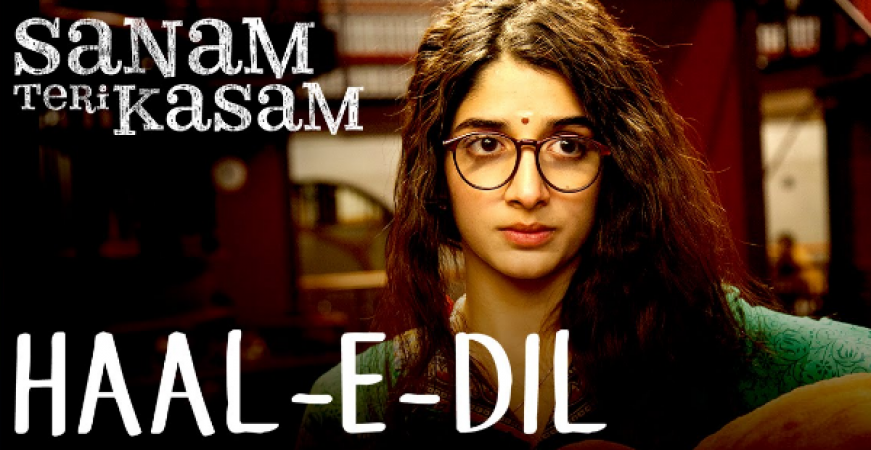
Songs have the ability to arouse feelings, bring back memories, and establish themselves as timeless classics in the world of cinema. "Haal-e-dil" is one such song that has irrevocably changed Bollywood. However, many people might not be aware that this recognizable tune was originally selected for Salman Khan's hugely successful song "Tere Naam" (2003). The tale of "Haal-e-dil" and how it moved from one movie to another before ending up in "Sanam Teri Kasam" (2016) is an intriguing one of artistic skill, feelings, and the relationship between a director and his star.
Satish Kaushik's 2003 film "Tere Naam," which was released to great acclaim, was directed. The film's soul-stirring music, which was composed by Himesh Reshammiya, was at the heart of its appeal. The song "Tumse Milna," also referred to as "Haal-e-dil," was one of the highlights. The song, which was performed by Udit Narayan and Alka Yagnik, perfectly captured the feelings of love, pain, and longing.
The song "Haal-e-dil" was originally chosen for a crucial scene in the movie where Salman Khan's Radhe character expresses his intense feelings for Bhoomika Chawla's female lead. The song was a crucial component of the movie because it expertly captured the character's unfiltered, intense emotions.
Undoubtedly, "Haal-e-dil" was one of the best songs on "Tere Naam," but fate had other ideas. While making her movie "Sanam Teri Kasam" in 2016, more than a decade later, director Radhika Rao had to make an interesting choice.
Since "Haal-e-dil" was seen as Salman Khan's lucky charm, the producers of "Sanam Teri Kasam" chose to use it. They had to secure permission to use a song that had already grown to be an iconic component of "Tere Naam," so this decision wasn't without its difficulties. But the choice was motivated by a strong conviction that the emotional resonance of the song could improve the plot of "Sanam Teri Kasam."
Salman Khan was reportedly "upset" to learn that "Haal-e-dil" would be used in "Sanam Teri Kasam." His 2003 hit song had been a key component, and his career and the song's emotional significance were inextricably linked. It was evidence of his talent as an actor, the significance of "Tere Naam," and his capacity to make difficult emotions clear through his performances.
But then the narrative takes a sweet turn. Salman Khan's response after seeing "Haal-e-dil" as a part of "Sanam Teri Kasam" was extraordinarily moving. According to director Radhika Rao, he was so moved by the song's inclusion in the new movie that "it almost got tears to his eyes." This strong emotional reaction demonstrated how powerful music is and how it can go beyond the limitations of film.
"Haal-e-dil" is used at a crucial point in "Sanam Teri Kasam," similar to where it first appeared in "Tere Naam." The film's lead actors, Harshvardhan Rane and Mawra Hocane, portray the depths of their love and longing in the song, which is an emotional powerhouse. Similar to how it did in "Tere Naam," "Haal-e-dil" perfectly encapsulates the suffering and longing of love in "Sanam Teri Kasam."
The progression of "Haal-e-dil" from "Tere Naam" to "Sanam Teri Kasam" is evidence of the music's enduring influence and capacity to elicit strong feelings. Additionally, it shows how closely connected a director and a star can be when a song transcends its original context and becomes a representation of their artistic vision.
"Haal-e-dil" became more than just a song for Salman Khan; it became a piece of his filmography. Its emotional resonance was so potent that even after finding a new home in "Sanam Teri Kasam," it managed to continue touching viewers and, most importantly, the performer who gave it life in the first place.
"Haal-e-dil" is a song that transcends time and space. Its progression from "Tere Naam" to "Sanam Teri Kasam" is evidence of the music's enduring influence in movies and the strong feelings it can evoke. The profound connections that can be made between art, artists, and audiences are highlighted by Salman Khan's initial attachment to the song and his subsequent emotional reaction to its use in another film. In addition to serving as a melody, "Haal-e-dil" serves as a reminder of the wonder and the memories that film can engender in our hearts.
The Power of Simplicity: Raj Kapoor's Timeless Vision for 'Prem Rog'
Prem Rog, A Cinematic Gem Honored Among the Most Romantic Films
Raj Kapoor's Artistic Sojourn: Amsterdam's Muse and the Red Light Insight